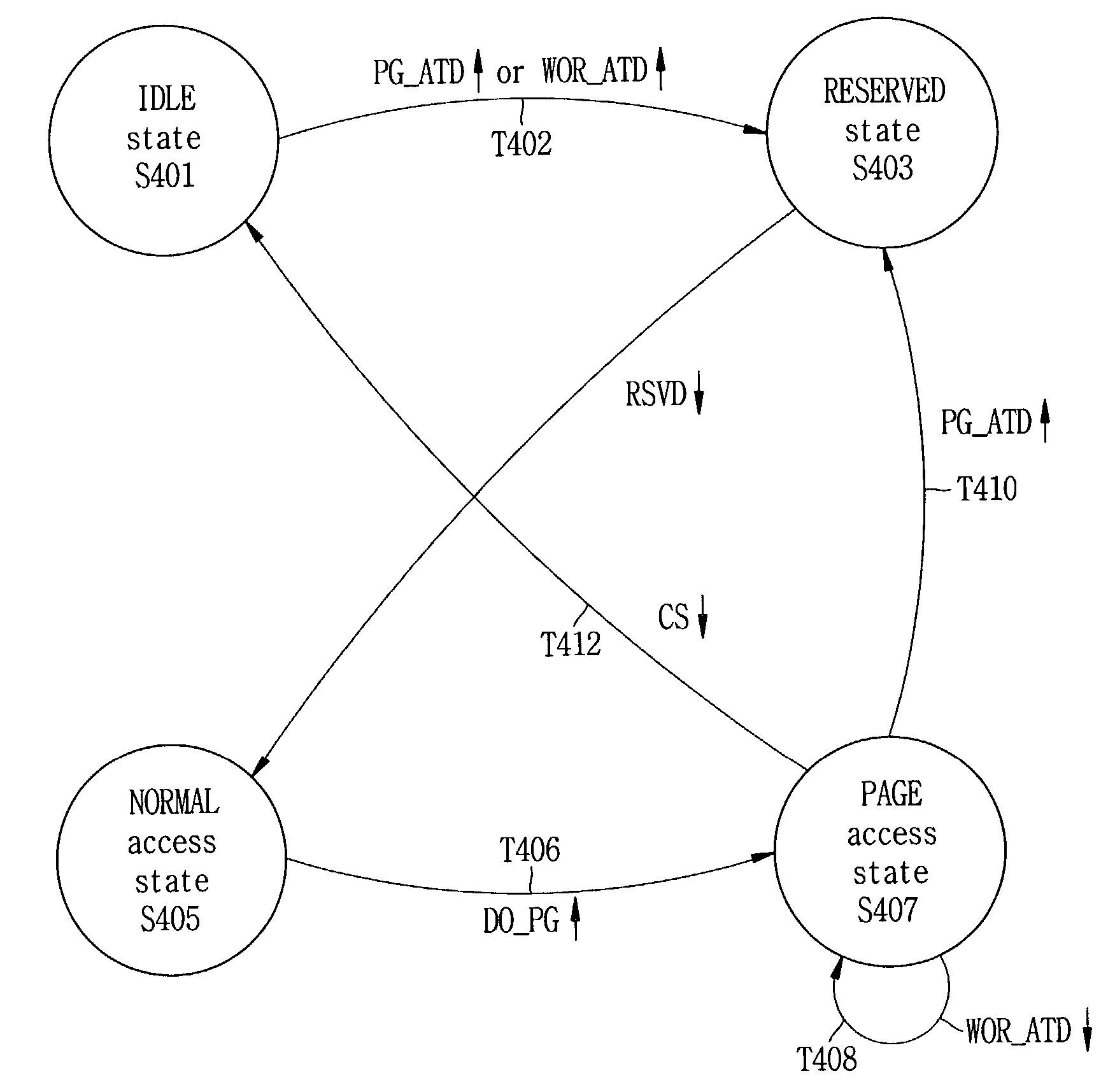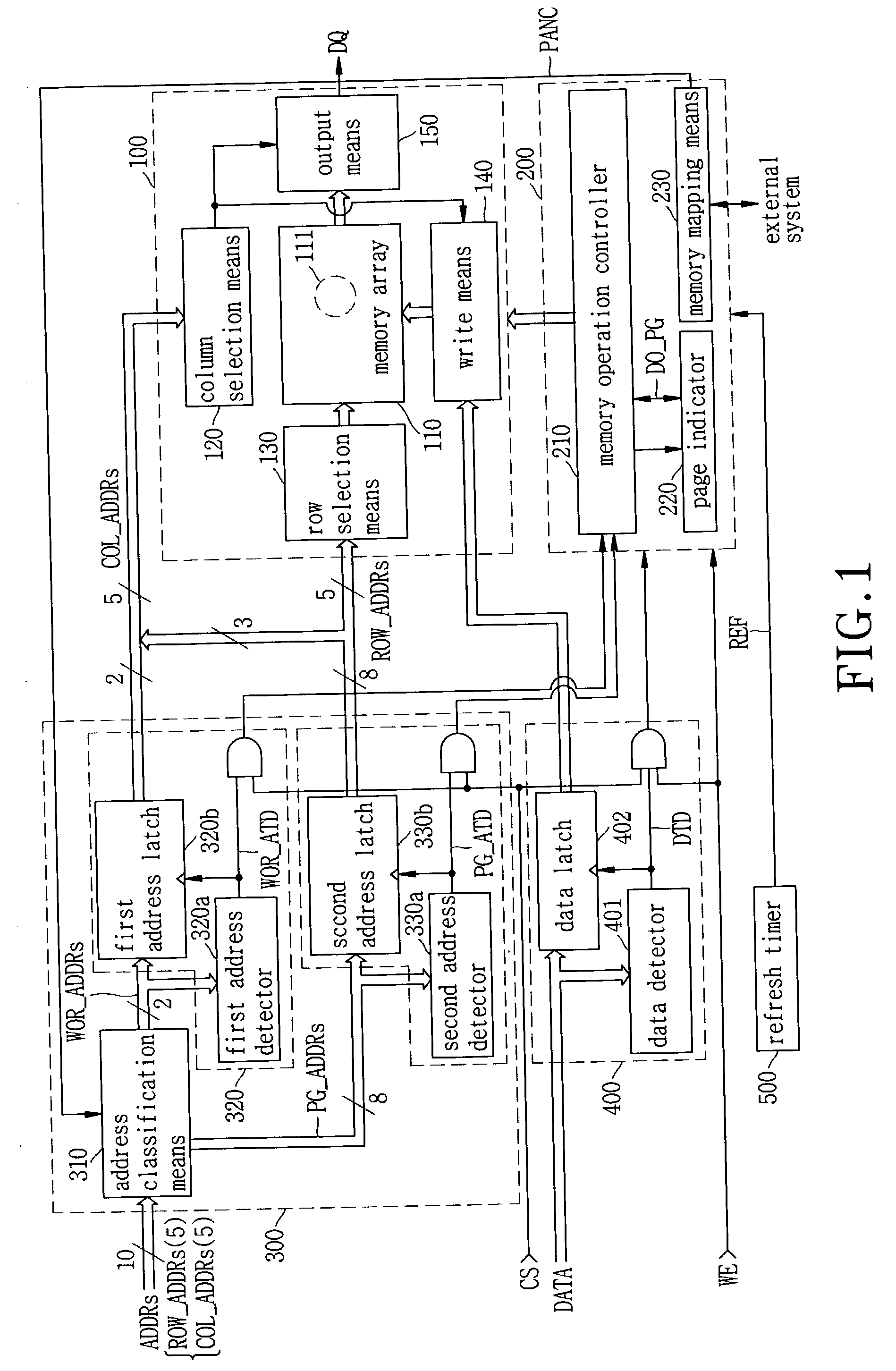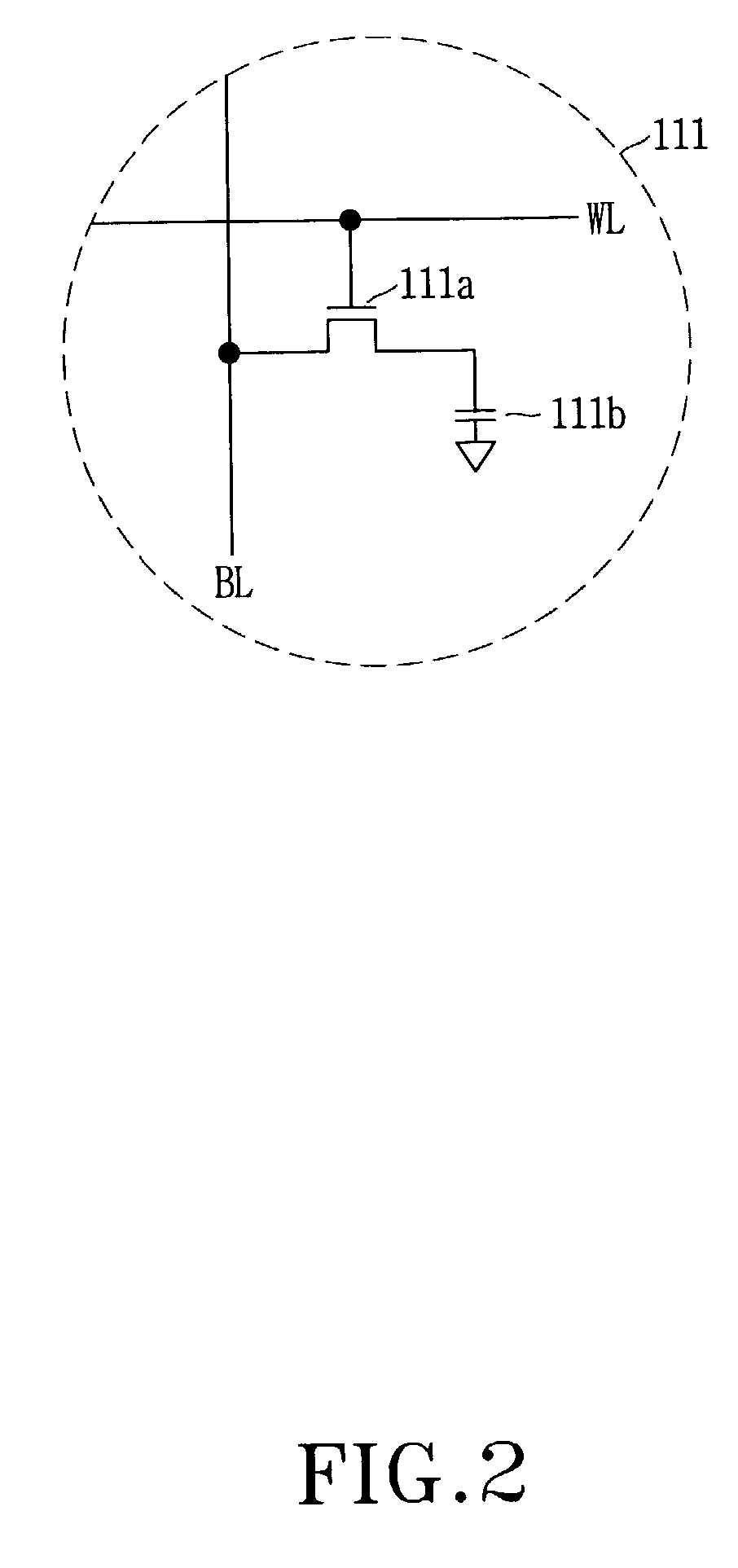SRAM compatible and page accessible memory device using dram cells and method for operating the same
- Summary
- Abstract
- Description
- Claims
- Application Information
AI Technical Summary
Problems solved by technology
Method used
Image
Examples
Embodiment Construction
[0020] In a memory device according to the invention, DRAM cells are implemented and a refresh operation is performed internally. But, duration for the refresh operation is not allocated in operation specification like as the general SRAM. Also, the memory device of the invention externally operates as the conventional SRAM without requiring additional signals for controlling the refresh operation.
[0021] The memory device has several states including a REFRESH state, a RESERVED state, an ACCESS state and an IDLE state.
[0022] In the REFRESH state, the memory device activates a word line and reads out data from the memory cells connected to the activated word line. And then the data is amplified and restored to the memory cells.
[0023] In the RESERVED state, the REFRESH state can be allocated for the memory device. That is, the RESERVED state is transited into the REFRESH state, in response to a refresh operation signal provided from a refresh timer.
[0024] In the ACCESS state, write / re...
PUM
 Login to View More
Login to View More Abstract
Description
Claims
Application Information
 Login to View More
Login to View More - R&D
- Intellectual Property
- Life Sciences
- Materials
- Tech Scout
- Unparalleled Data Quality
- Higher Quality Content
- 60% Fewer Hallucinations
Browse by: Latest US Patents, China's latest patents, Technical Efficacy Thesaurus, Application Domain, Technology Topic, Popular Technical Reports.
© 2025 PatSnap. All rights reserved.Legal|Privacy policy|Modern Slavery Act Transparency Statement|Sitemap|About US| Contact US: help@patsnap.com



